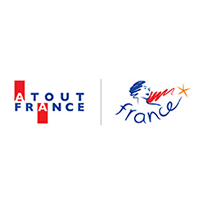Cambodia
Located about 2.5 kilometers east of Preah Khan, northeast of the Angkor complex, Neak Pean is a small, circular, man-made island, crowned at its center by a Buddhist temple. Through its architecture and five pools, the site exudes a serene, ancient atmosphere. It offers a striking example of the harmonious combination of Buddhism and Hinduism.
History
Built by King Jayavarman VII toward the end of the 12th century, Neak Pean Temple was dedicated to Buddhism and to Lokeshvara, the bodhisattva of compassion.
However, according to Hindu believers, the layout of each pool follows an ancient Hindu cosmology. The four surrounding pools were believed to represent water, earth, fire, and wind. By bathing in these waters, devotees believed they could be healed of illnesses. As a result, from its inception, the temple was considered a form of public hospital. Long overtaken by the jungle, Neak Pean was cleared in the 1920s and later restored in the 1930s using the anastylosis method. Today, the temple’s pools are often dry but tend to fill with water during the rainy season.
Visiting Neak Pean Temple
Built in the artistic style of Prasat Bayon, Neak Pean is a remarkable example of Khmer architecture. It is thought to be a symbolic replica of Lake Anavatapta, a mythical lake located in the Himalayas.
The temple sits atop a seven-tiered circular pyramid, rising above a large square basin surrounded by four smaller basins. Together, the layout forms a small circular island with a diameter of about 14 meters. At the base of the central structure, two nagas (mythical serpents) coil around it, their heads marking the entrance. The name "Neak Pean" or "Neak Poan," meaning "Entwined Serpents," derives from the intertwined tails of these nagas.
Measuring 70 meters on each side, the main basin is the centerpiece of the site and reflects the temple’s profound religious significance. Originally, four statues used for purification rituals stood within the main basin. Today, only one remains: an unusual statue located at the center of the causeway leading across the basin to the temple. This statue was reconstructed from fragments recovered by French archaeologists during the site's clearing. It depicts a strange figure: a horse with its legs entwined with a human leg. According to local mythology, it represents an ancient legend recounting the heroic feat of Avalokiteshvara, the bodhisattva who transformed into a flying horse known as Balahā to rescue shipwrecked sailors.
In contrast to its Buddhist origins, the site is also shaped by Hindu influence, as evidenced by the four peripheral basins, each about 100 meters in circumference, connected to the central basin by channels. When the temple was active, the central basin fed the surrounding pools, with water flowing through four ornate spouts that are still visible today. Each spout is shaped differently: an elephant’s head to the north, a horse’s head to the west, a lion’s head to the south, and a human head to the east. According to Hindu belief, the elephant represents water, the horse symbolizes wind, the lion stands for fire, and the human embodies the element of earth.
How to get there
From nearby Preah Khan, it is most convenient and safest to reach Neak Pean by tuk-tuk or by hiring a taxi service.
Opening Hours
Neak Pean is open to visitors from 5:00 AM to 6:00 PM.

